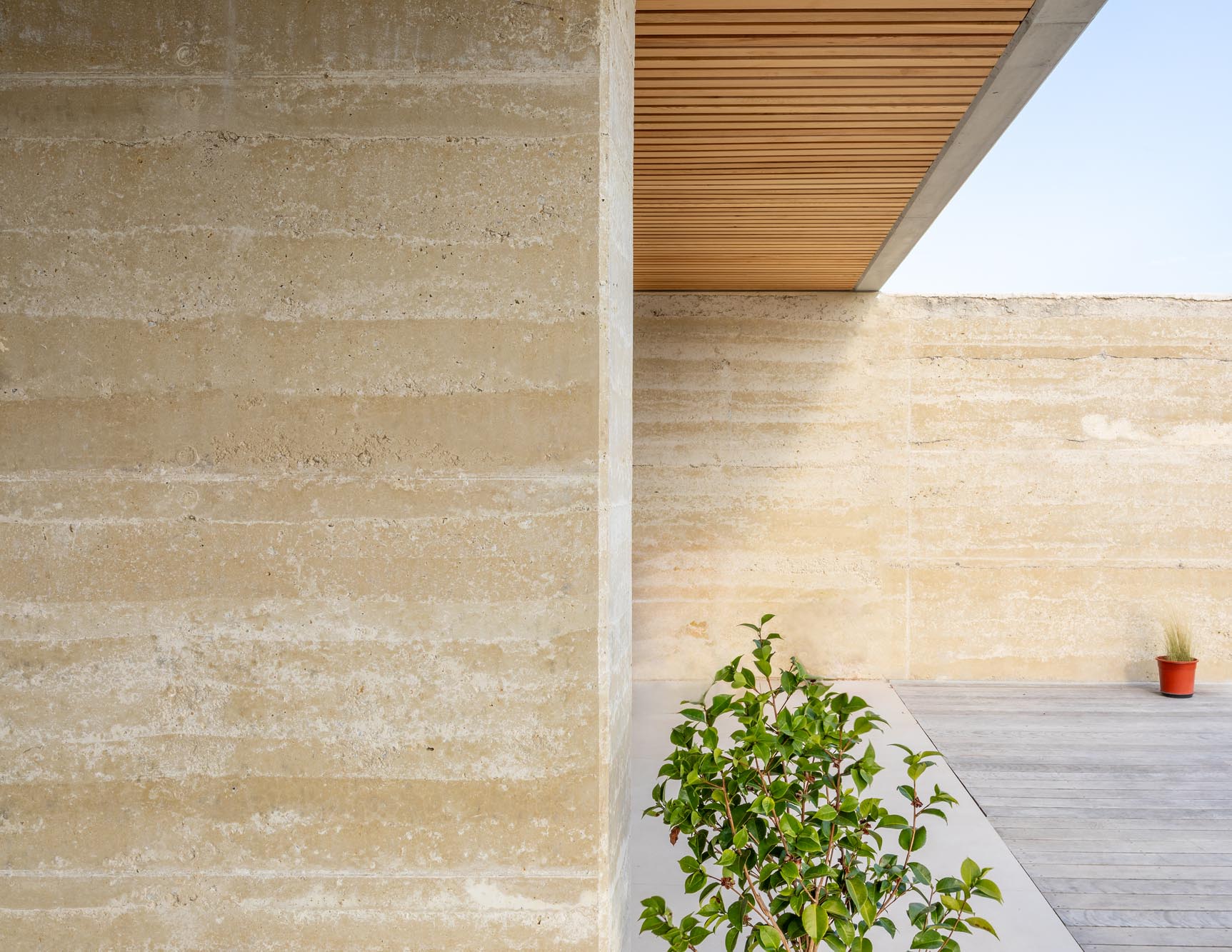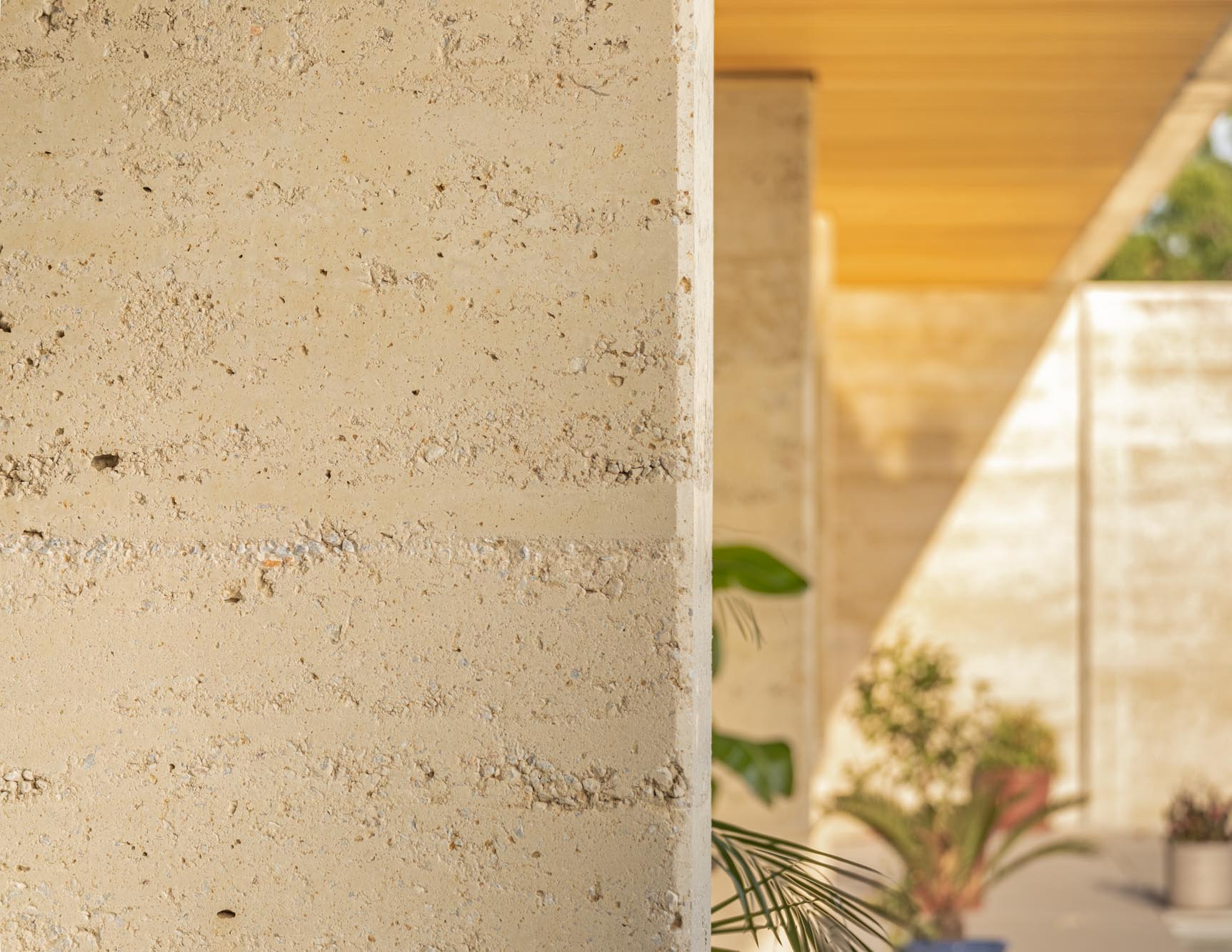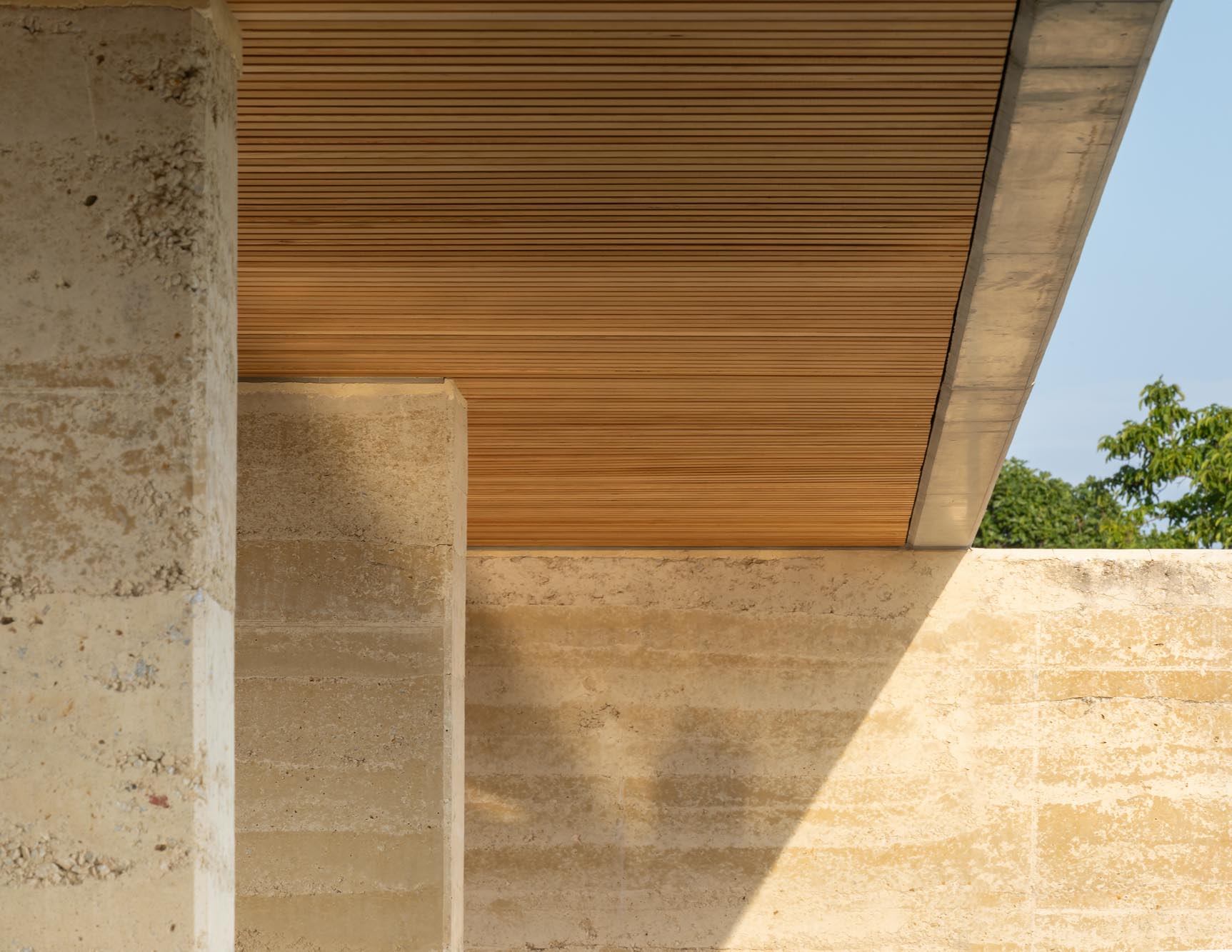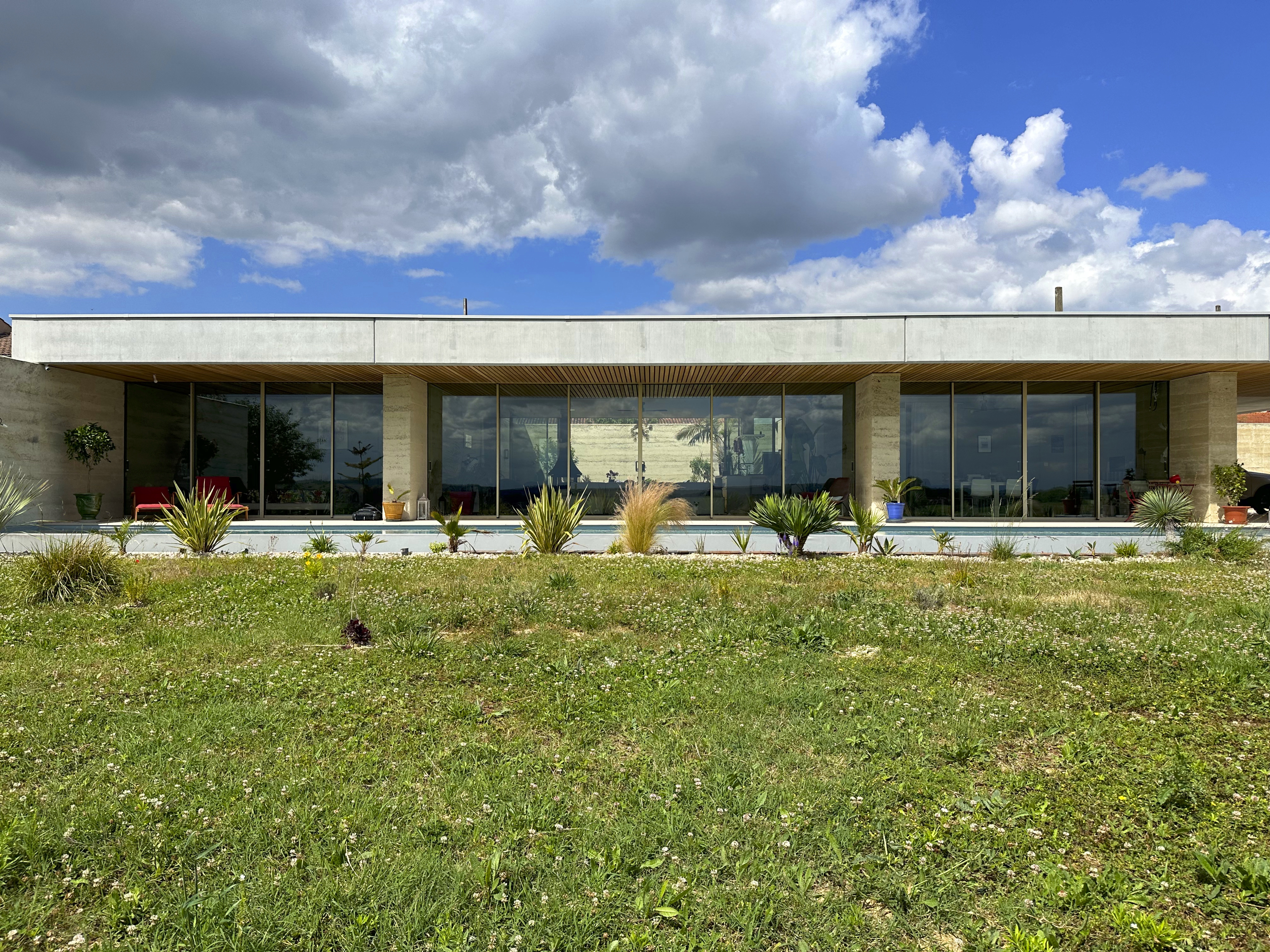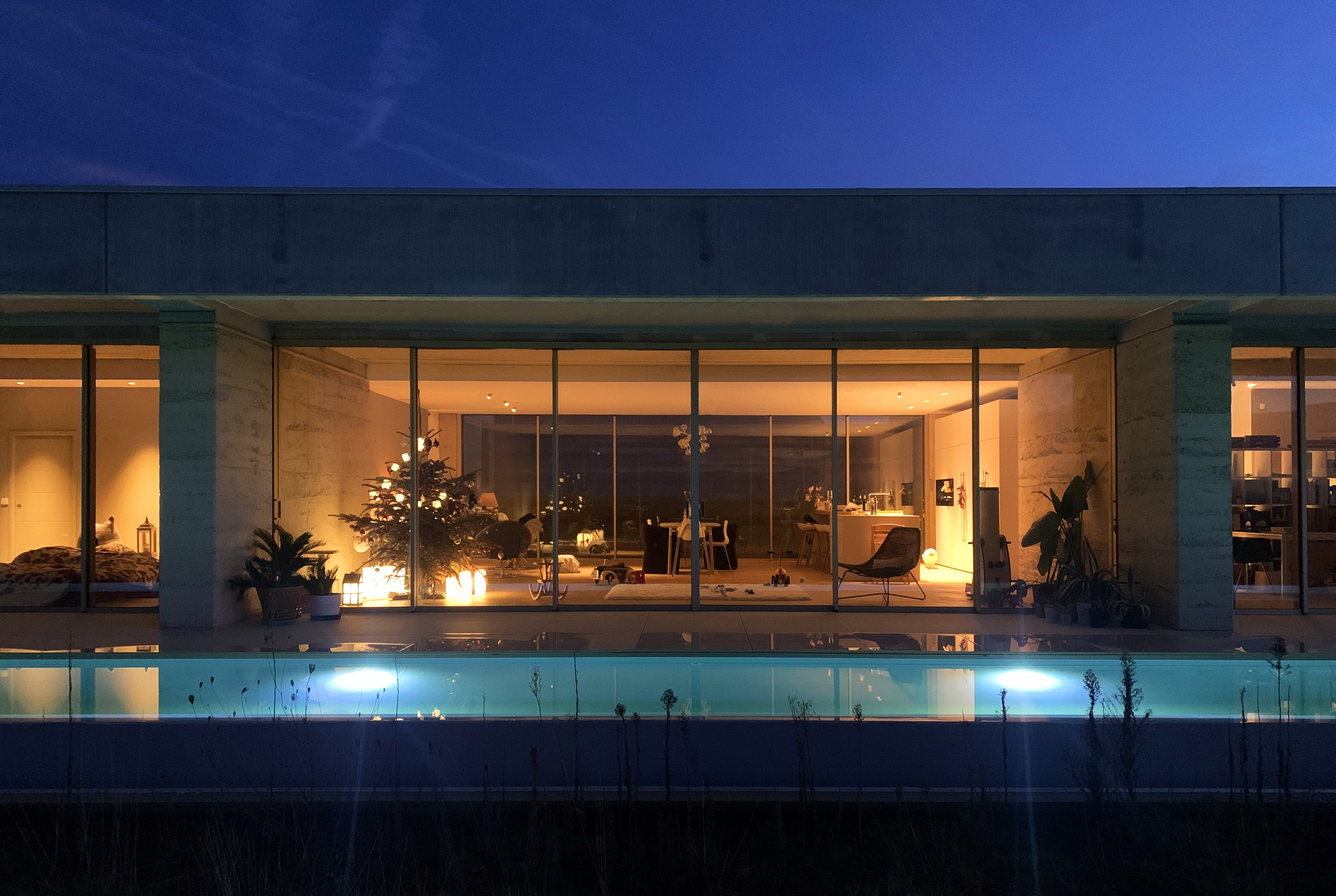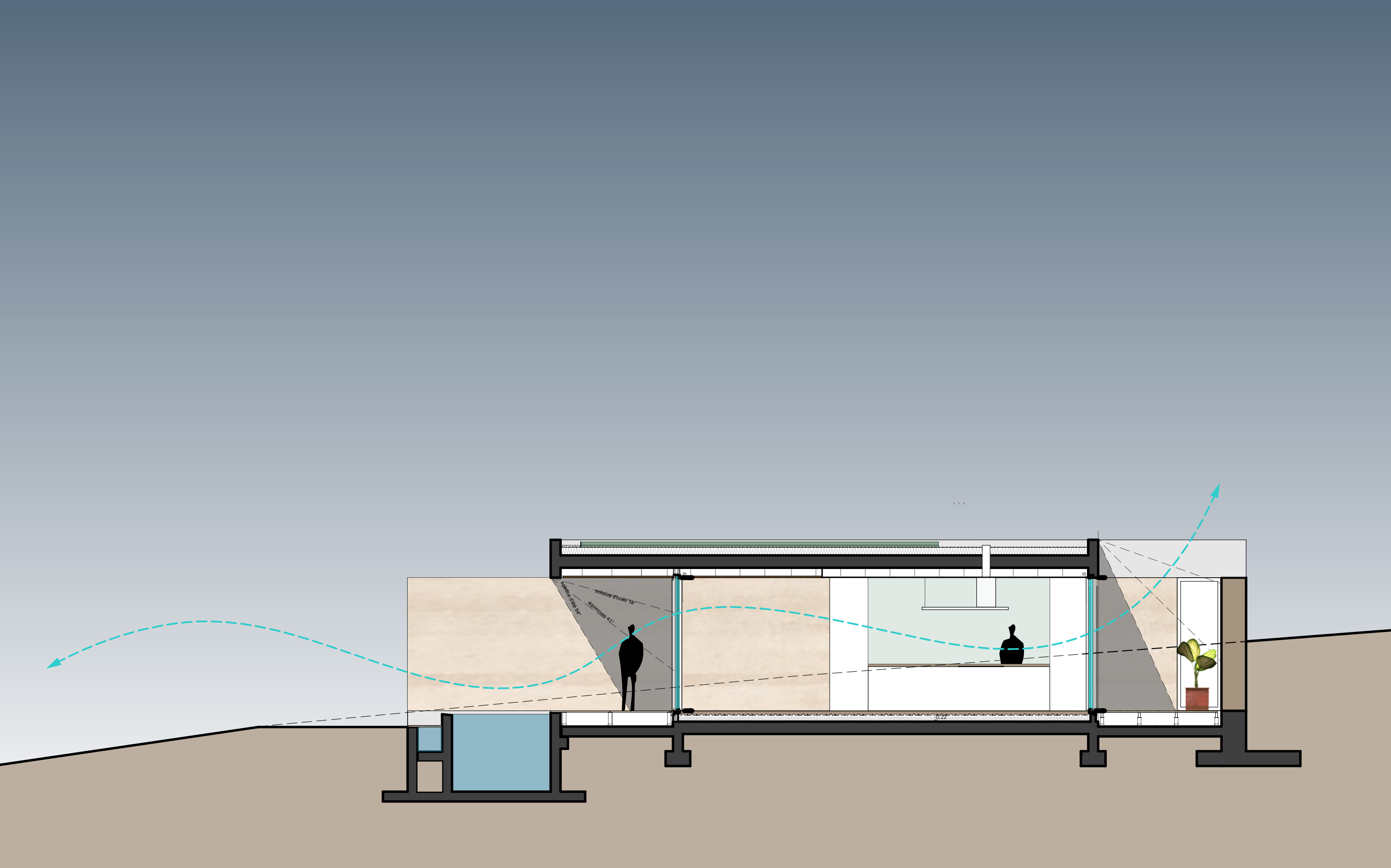Reconnecting with nature
Maison bioclimatique C303
Maison bioclimatique en béton de terre (terre du site)
The construction project for this single-storey bioclimatic individual house was developed according to bioclimatic, low-tech principles, but also integration with the site and reconnection to the surrounding nature. Echoing ancestral construction practices, and also in a circular economy initiative, the walls were erected in stabilized earth concrete, uninsulated and unreinforced, implemented using the traditional rammed earth technique.
France
Local
Belberaud
Mainly rural
It refers to a physical transformation of the built environment (hard investment)
Yes
2024-06-01
No
No
No
As a representative of an organisation
The objective of this project was to demonstrate that:
- earth construction could adapt to contemporary architecture;
- the know-how of yesteryear can be brought up to date;
- we can do without insulation when we work on matter and inertia, with the sun;
- the relationship with nature is essential;
We obtained a material of more than 10 mpa by using 30% of the site's soil in the formulation of the unreinforced and unreinforced load-bearing walls.
Winter and summer, the results in terms of comfort and energy consumption are convincing.
The building fits into the large landscape without difficulty.
Socially, the artisan finds pleasure in working, in contact with the earth, and regains the pride of being a craftsman.
Recognitions obtained:
- Construction Trophy 2024 - BATIACTU/SMA
- Décarbonnons Materials&Light Trophy - DA
- Special mention Constructive Process - AVIVRE
- earth construction could adapt to contemporary architecture;
- the know-how of yesteryear can be brought up to date;
- we can do without insulation when we work on matter and inertia, with the sun;
- the relationship with nature is essential;
We obtained a material of more than 10 mpa by using 30% of the site's soil in the formulation of the unreinforced and unreinforced load-bearing walls.
Winter and summer, the results in terms of comfort and energy consumption are convincing.
The building fits into the large landscape without difficulty.
Socially, the artisan finds pleasure in working, in contact with the earth, and regains the pride of being a craftsman.
Recognitions obtained:
- Construction Trophy 2024 - BATIACTU/SMA
- Décarbonnons Materials&Light Trophy - DA
- Special mention Constructive Process - AVIVRE
Reuse of earth
Ancestral know-how
sustainable development
reconnection to nature
health of residents
Reconciling the earth and the building, for a more sustainable architecture that respects its environment and the living people who practice it.
All over the world, projects using earth material have persisted over the centuries.
All over the world, projects using earth material have persisted over the centuries.
The main objective was to demonstrate that earth is an aesthetic material and that it participates in the osmosis between nature and the built environment. His presence in the project goes well beyond aesthetics.
Visitors, whether they like the old or the contemporary, agree that they find the project magnificent.
Visitors, whether they like the old or the contemporary, agree that they find the project magnificent.
This prototype is the prototype of a house that could adapt to all types of users: young people, retirees, families with children, people with reduced mobility. It was designed to adapt to its users, and not the other way around. The place of the craftsman who builds is rediscovered. The price per m2 remains under control.
It is a research and development project carried out by individuals and an architectural agency. The involvement of both parties in taking risks, in the search for solutions, without looking at the hours spent, contributed to the success of this project.
Numerous exchanges have taken place with other companies in Europe and around the world, which are interested in this construction method and the integration of earth in construction. It is these exchanges and this generosity that allowed trust to be established between everyone (client, architectural agency, companies, etc.) and the project to succeed.
Architecture
Structural engineering
Climate engineering
Thermal engineering
Materials science
Masonry
Research laboratory
These different representatives interacted with each other in a difficult context (covid), but with the conviction of carrying out a project that makes sense.
Structural engineering
Climate engineering
Thermal engineering
Materials science
Masonry
Research laboratory
These different representatives interacted with each other in a difficult context (covid), but with the conviction of carrying out a project that makes sense.
Innovative material, reuse of earth
Bioclimatic design with winds and sun (summer comfort without air conditioning and winter comfort by limiting the use of fossil energy)
Large openings allowing natural light to enter in winter and summer
infrastructure optimization
Interior patio allowing quality natural ventilation
swimming pool allowing adiabatic cooling
Natural and healthy materials
Autonomous sanitation based on phytopurification
Bioclimatic design with winds and sun (summer comfort without air conditioning and winter comfort by limiting the use of fossil energy)
Large openings allowing natural light to enter in winter and summer
infrastructure optimization
Interior patio allowing quality natural ventilation
swimming pool allowing adiabatic cooling
Natural and healthy materials
Autonomous sanitation based on phytopurification
1) Observation of the old building
2) Numerous readings of works and translations
3) Exchanges with other countries: England, Spain, Canada, United States, Australia, New Zealand, etc. which have been practicing this constructive method for over 40 years or more
4) Design of plans according to the construction technique used
5) Laboratory tests
6) Support for construction companies
2) Numerous readings of works and translations
3) Exchanges with other countries: England, Spain, Canada, United States, Australia, New Zealand, etc. which have been practicing this constructive method for over 40 years or more
4) Design of plans according to the construction technique used
5) Laboratory tests
6) Support for construction companies
Anywhere in the world where there is land.
The global challenges are the heaviness of standards which tend to limit the return to constructive common sense, and de facto the return to financially affordable projects.
Reconnecting with nature: this project falls completely within the scope of this theme: producing a habitat:
- in connection with the surrounding nature which is omnipresent in the project
- built with the surrounding nature itself
- which fits into the large natural landscape
- which provides winter and summer comfort without air conditioning and with natural light maintained all year round
Nature was the common thread of this project and has always driven my designs.
- in connection with the surrounding nature which is omnipresent in the project
- built with the surrounding nature itself
- which fits into the large natural landscape
- which provides winter and summer comfort without air conditioning and with natural light maintained all year round
Nature was the common thread of this project and has always driven my designs.

